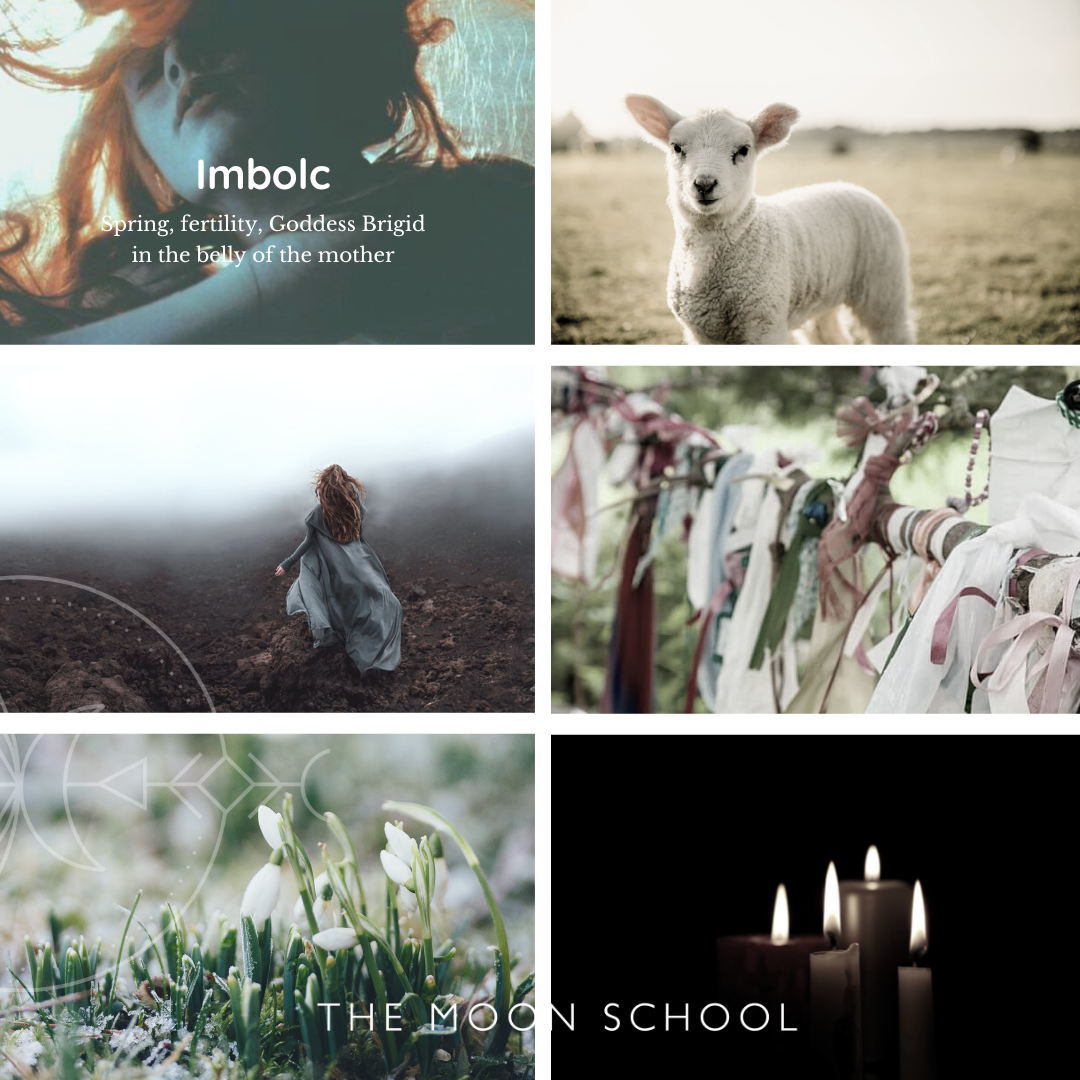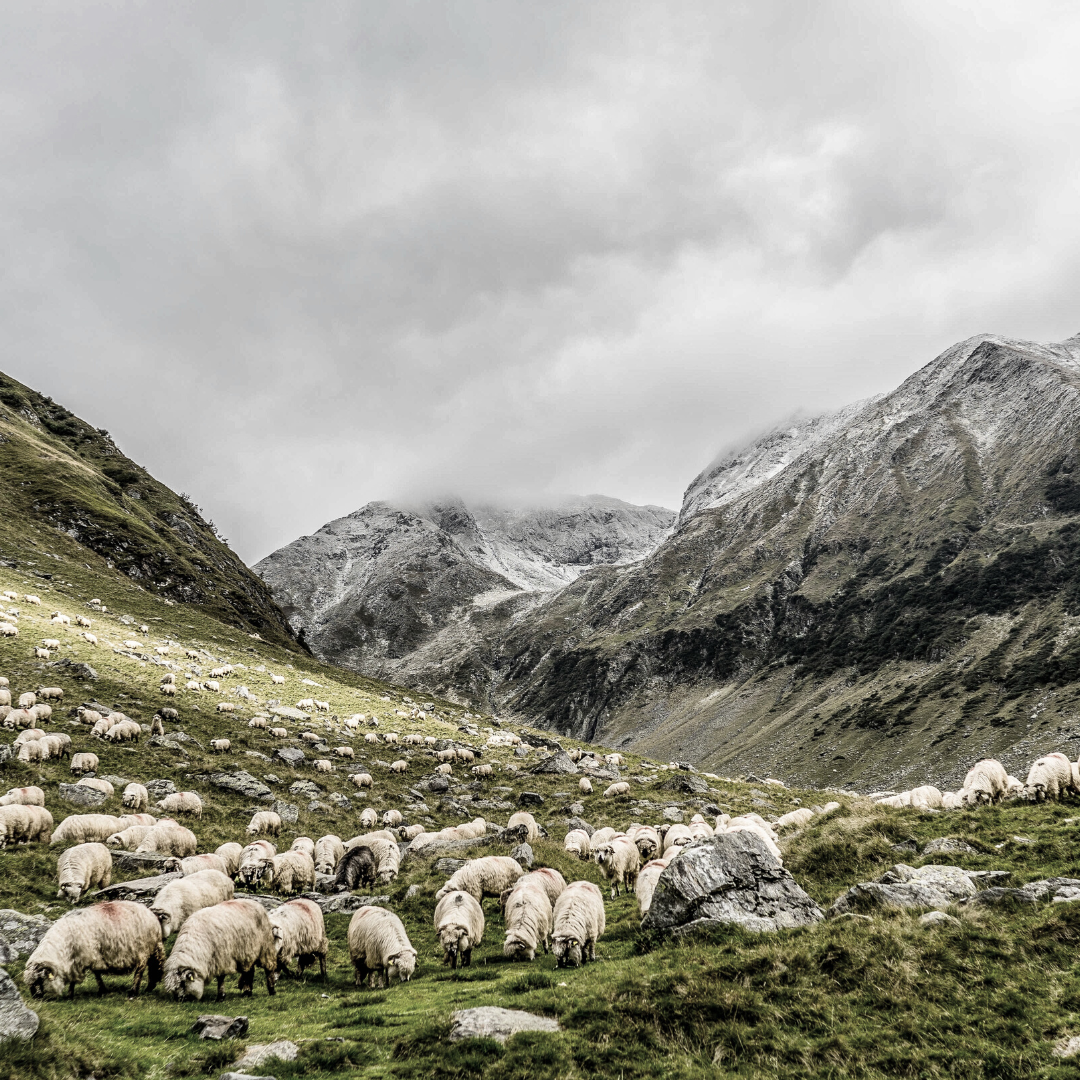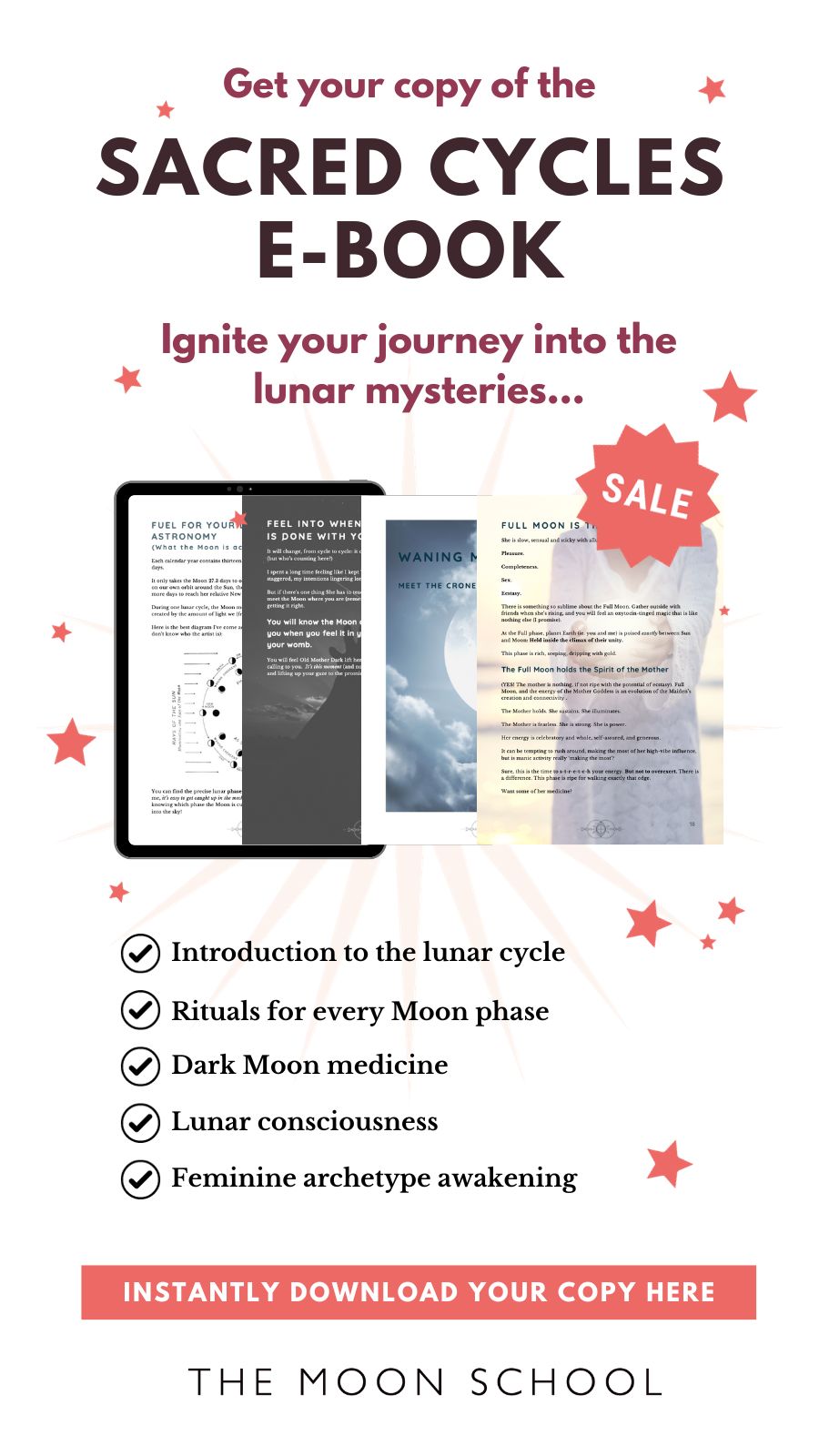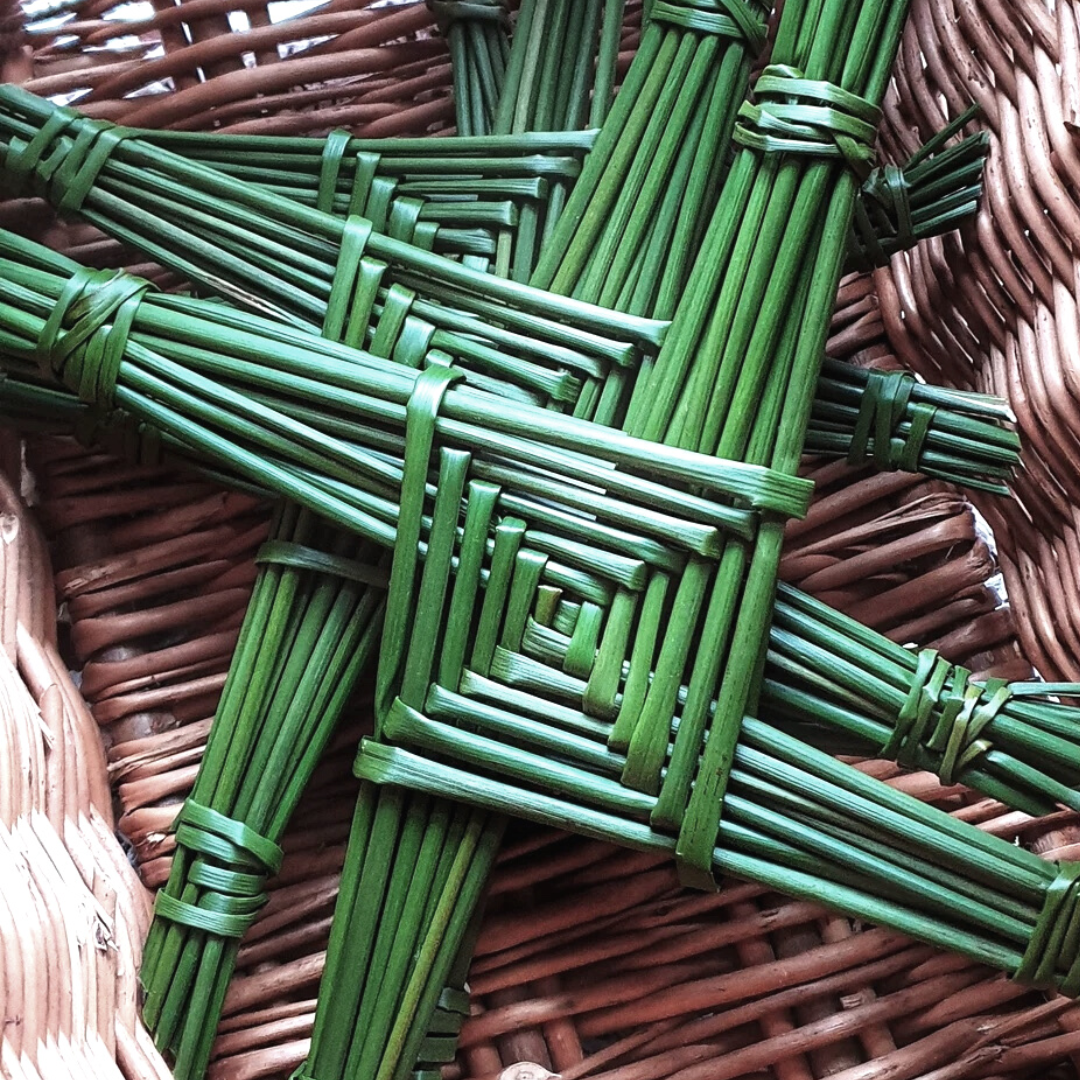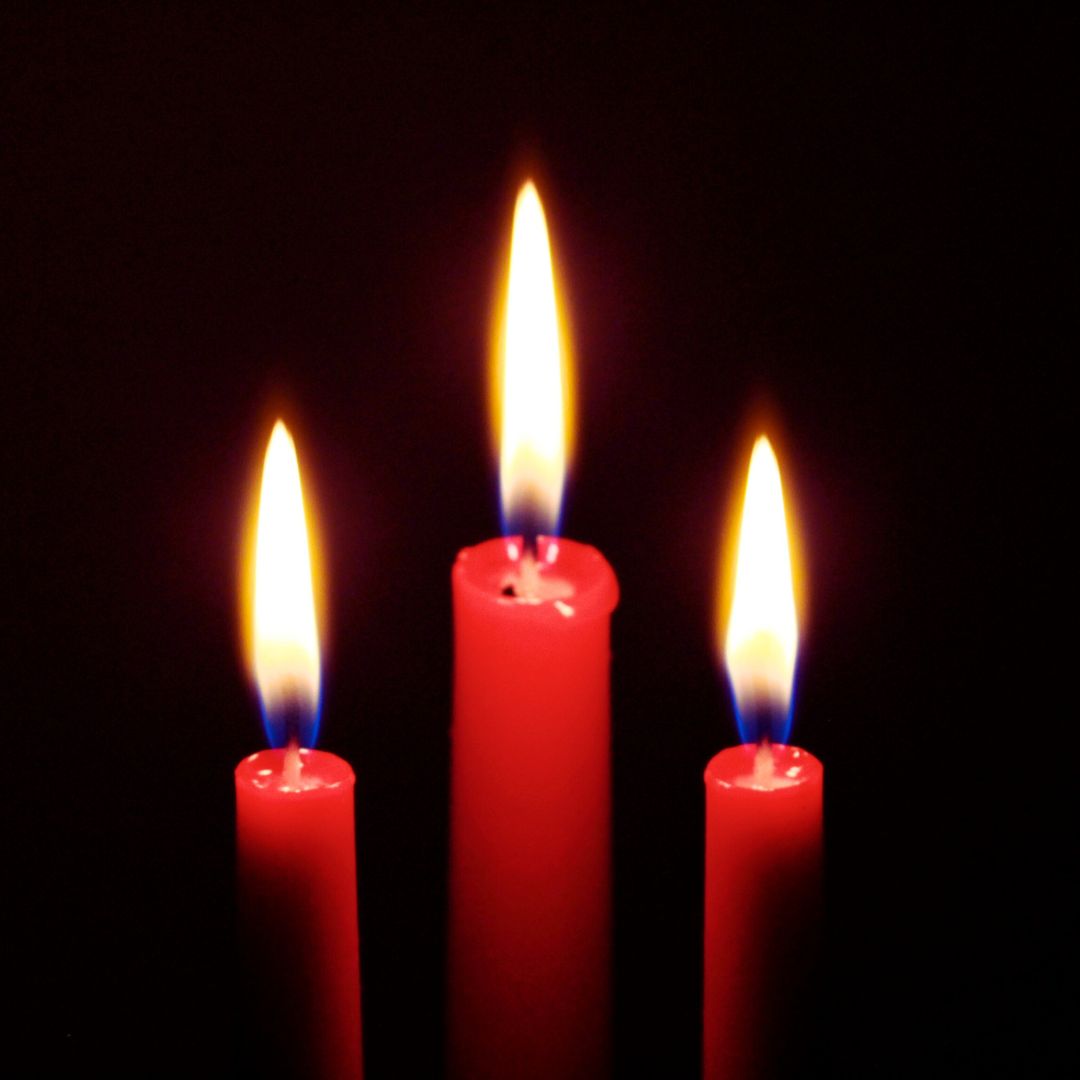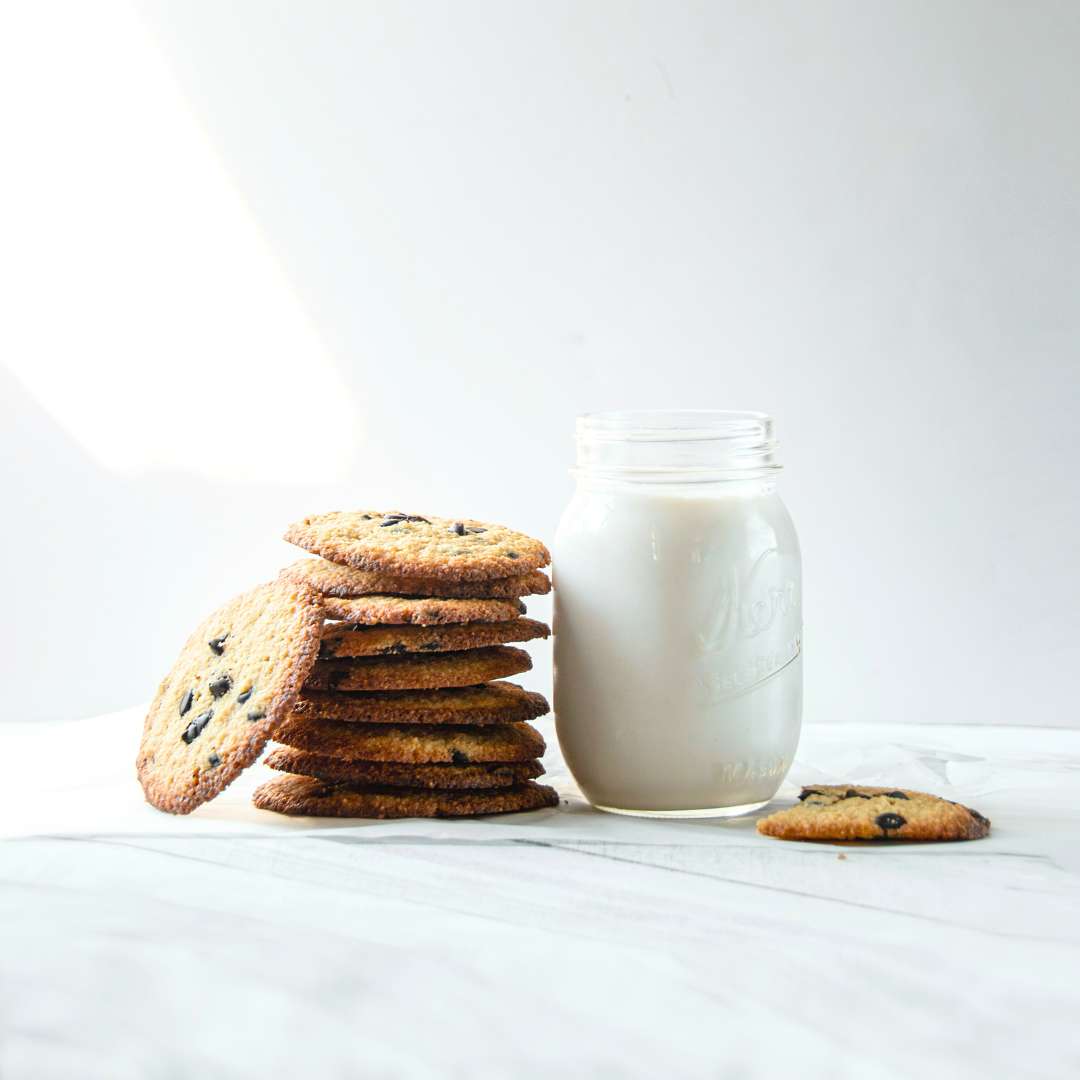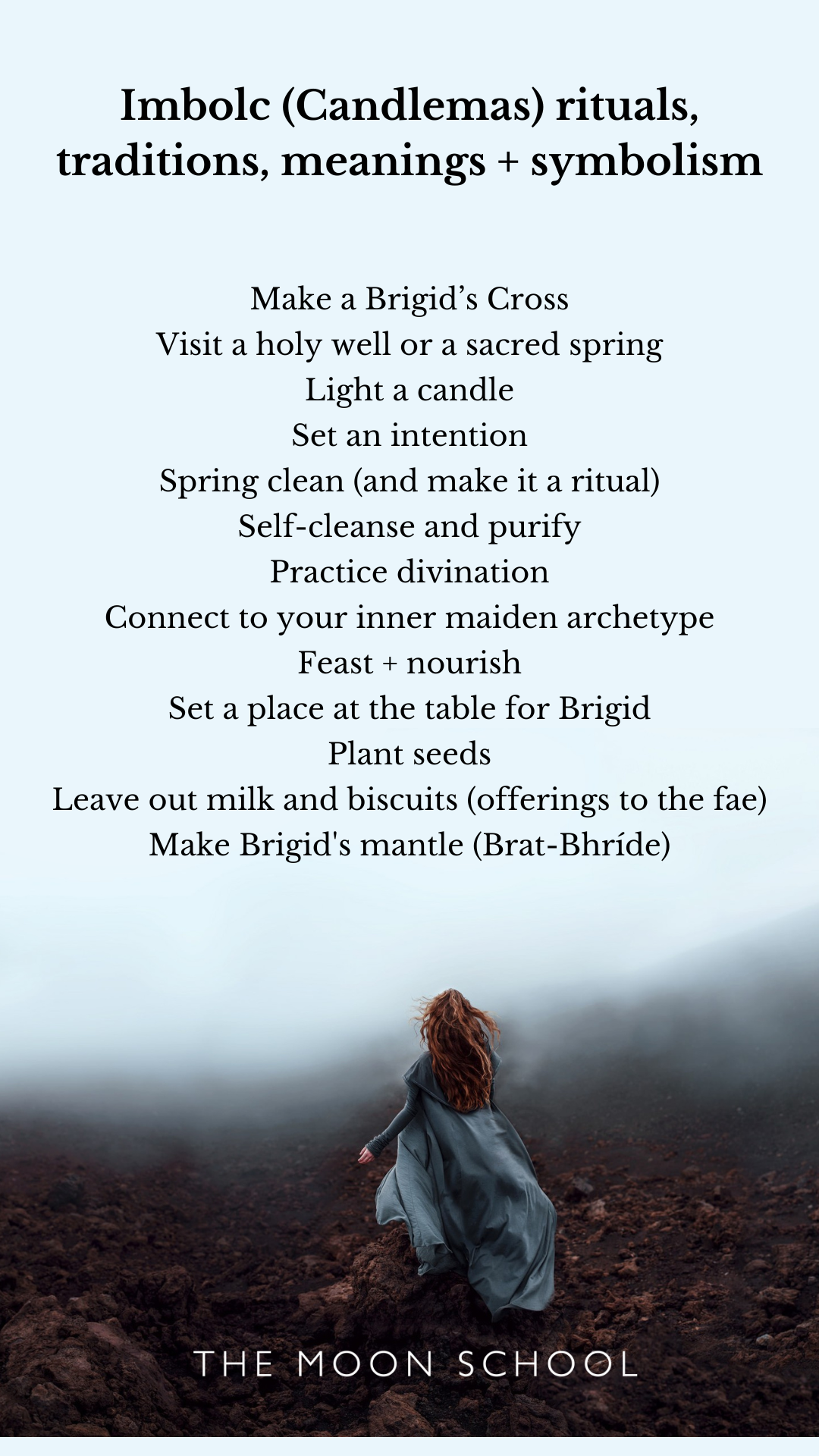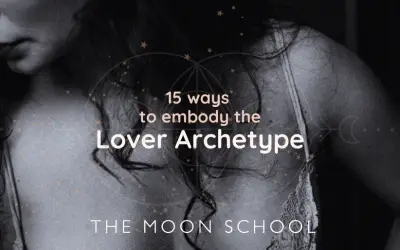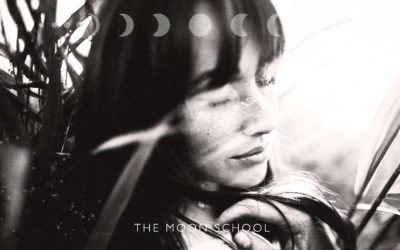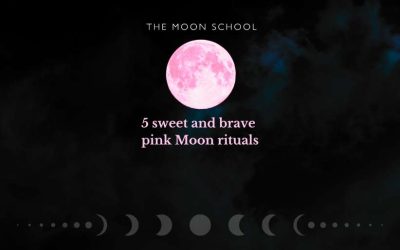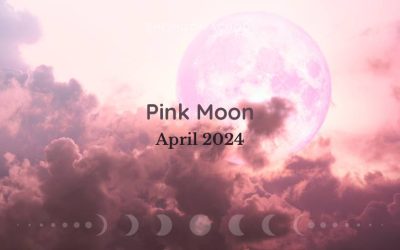Wondering how to celebrate Imbolc, the ancient fire festival?
There are many Imbolc traditions centering around this first holiday of the year. Whether you regard it as a pagan celebration, a Christian holiday, (or don’t know what on earth it is!) read on to discover how YOU can honour the Sun’s return.
According to the Gregorian calendar, January fading into February is nothing too special. But to witches, pagans, Wiccans, and those cunning folks who tune into the cycles of nature and the rhythm of Mother Earth, there’s something special in the air.
WE know this is a time of power!
In my book, Imbolc is one of the most hopeful of the festivals and feast days in the wheel of the year.
Like all cross-quarter days and fire festivals (also known as sabbats), Imbolc brings an opportunity to align with the energy of the Sun, the Earth, and the Goddess.
Many Imbolc traditions center around dreaming, reflecting, celebrating, giving gratitude and sowing seeds of intention as we bid farewell to the winter weather, and the coldest part of the year.
AND… as most mystical folk know, the energy you generate on these significant seasonal days, will ripple out through the entire rest of the year… So you want to do it right.
When is Imbolc 2024?
The precise date of Imbolc can change year to year, as the exact astrological cross-quarter can vary.
Imbolc 2024 arrives on February 1.
It’s also known as Candlemas, or Brigid’s Day, and in 2023, Imbolc became a public holiday in the Republic of Ireland!
In the Southern Hemisphere, Imbolc / Candlemas can be celebrated on July 31, August 1 or 2.
What are the quarter and cross-quarter days?
Starting with Samhain (witches' New Year) there are eight quarter and cross quarter festivals (or power days) in the Celtic wheel of the year. Note that their exact dates can change each year.
- Samhain (October 31)
- Yule / Winter Solstice (December 21)
- Imbolc (February 1 - 2)
- Ostara / Spring Equinox (March 10 - 21)
- Beltane (April 30/May 1)
- Litha/Midsummer/Summer Solstice (June 21)
- Lughnasadh (August 1)
- Mabon (September 21)
These eight sabbats (or variations of them) have been celebrated all over the Celtic world for many centuries, probably longer. Yet not all of them would have been significant for every community, in every location. Drawing them together like this in a "wheel" or mandala is actually a pretty modern configuration.
What is Imbolc?
Imbolc is a fire festival that sits at the halfway point between Winter Solstice and Spring Equinox.
Normally celebrated on February 1 or 2 in the Northern Hemisphere, some researchers claim that Imbolc was even significant in Neolithic Ireland (this means from up to 12,000 years ago!) It’s long been celebrated as a pagan holiday,
In the Northern Hemisphere, the celebration of Imbolc is normally still deep winter – the land is sleepy and sunlight hours are scant. Even though daylight has been steadily increasing since Solstice, Spring hasn’t yet arrived. Maybe you’re catching warm glimmers on the odd day or two. But realistically, the woolens aren’t being packed away anytime soon!
In ancient times, before central heating and electric lights, these long cold winter months would have been felt more acutely than they are by us today.
So celebrations like Imbolc mattered to our ancestors.
Marking them with ritual, ceremony, and celebration was a way to draw collective attention to the lengthening days. And to celebrate and beckon forth the promise of the fertility of Spring, after the winter darkness.
Etymology of Imbolc (and how to pronounce Imbolc)
The origin of the word Imbolc is unclear, but it’s commonly thought to derive from the Old Irish i mbolc, meaning ‘in the belly’. This likely refers to the pregnancy of ewes at this time of year. Others believe its etymology stems from the Gaelic oimelc, meaning “ewe’s milk.” And this likely refers to the birthing of lambs and the ewes’ milk coming in.
Whatever the origin, the word is pronounced: “Im-olk”. A lot of people will say “Im-bolk” but that’s incorrect – the correct way to pronounce Imbolc is with a silent “b”.
The meaning of the word itself clearly revolves around the sheep, their early offspring, and the milk the flock produced. The farming practices of our ancient Gaelic and Celtic shepherd ancestors would’ve ensured the sheep gave birth early in the year. This is important – their fertility, and the bounty of this would’ve served as a real gift to the people at this time of year when food and sustenance were sparse.
What is the significance of Imbolc?
As a significant Celtic festival marking the beginning of spring, Imbolc has long been associated with the awakening of the earth from its winter slumber. Imbolc is also the feast day of the Celtic goddess Brigid and is often celebrated with rituals that focus on purification, renewal, and the warmth of the returning Sun.
It is a time for planting seeds, both literally and metaphorically, and for setting intentions for the year ahead. Imbolc is a time of hope and new beginnings, and as a pagan celebration, it’s often marked by lighting candles, fire rituals, and making offerings of ewe’s milk.
Let’s look at the spiritual meaning of Imbolc in a little more depth –
1. The start of Spring
Imbolc begins the season of Spring!
This early annual fire festival offers hope, buoyancy, and the expectation of new life. For our ancestors, the lambs being born at this time of year were a tangible sign of this!
Their arrival was also the initiation that meant the cycle of production could begin – from the ewes milk, cream could be collected, and cheeses crafted. From here, strength was renewed, and the people could continue with the tasks of the year.
2. A celebration of the Sun
The first cross-quarter (or sabbat) since Winter Solstice (Yule), Imbolc marks an important moment in the Earth’s annual trip around the Sun. The ancients clearly knew this – there are passage tombs in Ireland such as the Mound of Hostages on the Hill of Tara, which was specifically built to align with the sunrise and sunset on Imbolc (and also Samhain).
3. A time for ritual cleansing
Some scholars have written about Imbolc as a time for ritual cleansing. One Old Irish poem included in the Hibernica Minora describes “what is proper at Imbolc: washing the hands, the feet, the head”.
In truth, there isn’t a great deal of definitive evidence of the rites and rituals our ancestors practiced at Imbolc. But to me, it feels very much like this fire festival aligns with a time when ritual cleansing would have been welcome.
In my world, the emergence of February is around the time of the year I start to slough off the cobwebs and sweep out the corners – both literally and metaphorically! On a warm-ish day, I may open the windows to let in a fresh breeze. Or symbolically wash away the stagnation of winter with a ritual bath, in an act of self-care.
We know that in medieval times, people would dip into Brigid’s sacred springs and wells at Imbolc (see below). Whether my ancestors had other cleansing self-care practices or house-cleansing routines, I don’t know! But it’s not inconceivable.
4. The promise of new life
I’ve mentioned the snowdrops. Where I live in the Northern Hemisphere, the hellebores have usually pushed up through the dark soil too. Maybe even a narcissi or three…
The symbolism carried in these first spring flowers – dormant, underground in the belly of the mother over a long, dark, cold season – finally pushing up into the light – is intimately connected with the sacred festival of Imbolc. Their strength and resilience, and the hidden promise of them growing into something beautiful is a potent symbol of the potential we all hold within.
5. A time for weather divination
A little-known Gaelic custom of old, practiced at Imbolc, was weather divination. YES, you read that right!
According to weather lore, each year on Imbolc, the Cailleach gathers enough firewood to see her through the rest of the winter. If she knows there’s still bitterly cold weather to come, she’ll ensure the weather’s fine on Imbolc, while she’s out collecting. BUT tradition stated that if the weather was poor, then the old Hag Goddess was sleeping soundly, as she knew that winter was nearly over and sunny times were soon to return.
In another divination method from ancient Ireland, our Celtic ancestors would watch the winter dens of badgers and serpents to see if they emerged. As a Scottish Gaelic poem tells…
The serpent will come from the hole
On the brown Day of Bríde,
Though there should be three feet of snow
On the flat surface of the ground.
It’s supposed by some, that this Imbolc tradition is the early forerunner of Groundhog Day in America.
What’s the relationship between the Goddess Brigid and Imbolc?
The Goddess Brigid is a central figure in the celebration of Imbolc. Brigid (also known as Bride, Brigit, Briget, and Brighid) is a Celtic goddess associated with healing, poetry, and smithcraft, and is also revered as a guardian of the hearth and the keeper of the sacred flame.
Imbolc is considered to be her festival, so it’s a time when she’s honored and invoked for blessings of fertility, creativity, and inspiration.
With her flame-red hair, Brigid is often associated with the increasing light and warmth of the returning Sun, and her presence is felt as the Earth comes alive again, 8 weeks after the winter solstice.
Imbolc’s association with Brigid encapsulates the essence of renewal, purification, and the stirring of new life that are central to Imbolc celebrations.
Despite being an ancient Celtic Goddess with many of her own myths and tales, Brigid was adopted by early Christians, becoming the patron saint of Ireland. This illustrates just how powerful a deity she was – many Celtic Goddesses and their stories were all but wiped out by crusaders and colonizers. Brigid was, instead, canonized.
Today she is still identified with St. Brigid of Kildare, where a sacred fire still burns, tended by a group of Irish nuns. The flame is said to have been tended since pre-Christian times!
The Goddess Brigid is a triple Goddess, meaning she has three aspects – Maiden, Mother and Crone. Yet it’s in her maiden form that this Goddess is often welcomed at Imbolc. The wintery crone is being put to sleep and the maiden ushers in the Spring, bringing regeneration and renewal.
If you’re feeling the call and want to know how to celebrate Imbolc in your own life, working with the Goddess Brigid is a potent way to begin.
How to Celebrate Imbolc: 13 Rituals
- Make a Brigid’s cross
- Visit a holy well
- Light a candle
- Set an intention
- Do spring cleaning
- Self cleanse and purify
- Practice divination
- Connect to your inner maiden
- Feast (and nourish)
- Set a place at the table for Brigid
- Plant seeds
- Leave offerings to the Fae
- Make Brigid’s mantle (Brat-Bhríde)
You don’t have to do all of these. In fact, don’t even try! Just pick out one, maybe two that call to you and put them into practice.
**TIP: Ritual number 13 on this list will need to be started on January 31. It’s my absolute favourite.
1. Make a Brigid’s Cross
You’ve likely seen these on social media, they’re a really popular craft for Imbolc and a beautiful symbolic decoration. Making Brigid crosses is also a gorgeous, meditative ritual practice. It involves weaving and folding rushes and/or grasses to make a cross. Its origins are much older than the Christian cross, and when placed in your home, it’s believed to protect against negative energy, evil spirits, fire, and hunger.
Try making your own. There are many blogs and videos on Youtube explaining how to make one. I love THIS video from Active Culture Family and THIS simple tutorial.
If you’re feeling ambitious, you could also create a Brigid’s Doll.
Similar to Brigid’s cross, these little straw dolls are also traditionally made on Imbolc. Often placed around the hearth, sometimes in little homemade beds, these littel effigies of the fire Goddess were believed to bring blessings to the home, ensuring fertility and fortune for the coming season.
2. Visit a holy well or a sacred spring
Ireland has many holy wells dedicated to Saint Brigid. But there are many more scattered all over the British Isles, and further afield. DO a little research and find a water source near you.
Spend Saint Brigid’s day making a pilgrimage.
3. Light a candle
The flame is the traditional symbol of Imbolc and St Brigid is the guardian of the holy fire. This is one of the simplest Imbolc rituals of all – light candles around your home and enjoy their subtle, warming glow.
4. Set an intention
Along with the high, holy days of summer and winter solstice, autumn and Spring equinox, the four fire festivals offer a powerful surge of energy that can be harnessed for setting intentions.
- What do you want to call into your life over the next few months?
- Really take some time to reflect on the past year – what went well for you? What didn’t go so well? What would you love to do differently this year?
Set an intention on Brigid’s day, and ask her to support your efforts as the earth’s energy rises over the next couple of months.
Aligning the wheel of the year with the lunar cycle, you can see that Imbolc corresponds with the waxing crescent Moon. So many of the rituals and practices that you’d perform under this lunar phase can also be practiced now, at Imbolc.
5. Do spring cleaning (and make it a ritual)
Ritualize your cleaning, by calling in the Goddess, and honoring the Spirits of home and hearth to turn the most boring of tasks into something special.
This purifying pagan holiday is not only a great time for house cleaning rituals but encourages energetic and spiritual cleansing too.
-
Clear away clutter and tidy up
-
Sweep, dust, and vacuum (put on your favorite music and dance it out at the same time)
-
Use sound to energetically clear your spaces – band a drum, rattle, ring bells or simply clap your hands to move and disperse stagnant and stuck energy.
-
Burn incense, essential oils or dried herbs to clear the air. I use bundles prepared the previous summer from yarrow, rosemary, and mugwort growing close to my home. Be sure to open a window, so the negativity has somewhere to go…
6. Self-cleanse and purify
Purification has always been one of the main symbolic attributes of Imbolc season, particularly once the feast day was adopted by the catholic church to become Candlemass (think about the ceremony of baptism and being consecrated by holy water)
But long before this, it was a Celtic tradition to travel to Brigid’s holy wells to be purified in her sacred waters. Leaving offerings, like fabric tied into the branches of trees, they would ask for her healing and blessings.
Treat your body as the sacred temple it is. Draw a ritual bath, not only to clean your body, but to energetically purify too.
Take your time and try to engage somatically with the experience.
You could call in Brigid too – as the Goddess of sacred springs, she holds dominion over water and aligns with the frequency of new beginnings.
Leave her an offering to say thank you.
7. Practice divination
Maybe traditional weather divination is a little off-beat? If you don’t fancy stalking around a badger’s den, grab a deck of oracle cards and create a spread. Or visit a professional and get an in-depth reading.
Other forms of divination you could try include:
-
scrying (gazing into a medium like a crystal, smoke, or hot coals, to receive a vision)
-
using a pendulum
-
dreamwork
8. Connect to your inner maiden archetype
Celebrating the coming spring is joyful! The energy of this cross-quarter day is youthful, fresh, optimistic, and hopeful.
Like the waxing Moon phase, it’s brimming with the archetypal energy of the maiden.
Rise up to meet these early signs of Spring, by activating your inner maiden (you can be any age or gender to embody the maiden!).
9. Feast (and nourish)
In the days of our ancestors, the cow and sheep’s milk and cream gratefully received at this cold time of the year would have been life-changing to health and nutrition.
But our modern Western world seems to have demonized fat and dairy produce, convincing us it’s detrimental to health. But our bodies NEED bio-available vitamins and minerals, like iron, magnesium, copper, and calcium, which are found in animal fats and raw dairy. Our nervous systems need good amounts of fat to function properly and our bones and teeth need to be fortified.
Eating well is more than self-care – it’s an absolute necessity.
Imbolc comes as a reminder to nourish.
Why not host a ritual feast? Invite friends over, and cook them a rich and fortifying menu of food. This is a day to be grateful for the abundance we have, and express that.
10. Set a place at the table for Brigid
Another Imbolc tradition was to set a place at the table for the Goddess and invite her blessings into your home.
11. Plant seeds
Sow the seeds of hope and intention for the coming months by planting seeds at Imbolc. This will symbolically help to call in new life and fresh beginnings.
Use seed trays on windowsills to plant early salad, or get your garden going with the help of a greenhouse or cold frame.
12. Leave offerings to the fae
Brigid has a deep connection to the fae (fairy) folk. Some believe her origins are ancient – from the times when the lives of humans and the lives of the fae were far more closely woven together than they are now.
Honor this connection by leaving an offering – milk (of course!) and biscuits or cake would be perfect.
13. Make Brigid’s mantle / cloak (Brat-Bhríde)
My favorite Imbolc ritual and way to celebrate Imbolc, making Brigid’s cloak must be done on the 31st January!
St. Brigid’s Cloak is a piece of fabric that is left outside the house overnight. It’s believed that the Goddess herself would pass through the garden during the night, blessing the cloth. With Brigid’s blessings, the Brat-Bhríde could then be used throughout the year, for healing and protection.
Make your own Brigid’s cloak by tying a piece of fabric – traditionally the size of a handkerchief, but you could make it bigger – to a tree outside overnight. Allow it to collect the morning dew then gather it in and keep it safe.
Imbolc’s associations, symbols and correspondances
Whether you’re building an Imbolc altar, practicing a little spellwork, or weaving some seasonal magic, you can supercharge your efforts using the corresponding ingredients.
Here are the symbols, herbs, plants, colors and a whole lot more correspondences for Imbolc…
Goddess
- Brigid (also known as Bride, Brigit, Brigdu, Brigantia)
(Amongst many more) her titles include:
- Great Mother Goddess of Ireland
- Lady of the Flame
- Mistress of the Mantle
- Goddess of the Wells
- The Bright One
Elements
- Fire
- Water
Symbols
- Brigit’s cross
- Water and wells (for both healing and divination
- Fire and the sacred flame
- Candles
- The Moon (Brigid being a triple Goddess)
- Broom
Plants
- Snowdrop
- Crocus
- Hellebore
- Iris (all bulbs)
- Dandelion
- Celandine
- Tansy
- Violet
- Angelica
- Heather
- Blackberry
- Blackthorn (sloe)
- Oat
Insence
- Myrrh
Herbs
- Heather
- Bay
- Basil
Animals
- Sheep and lambs
- Serpents
- Badgers
Food
- Milk, cheese and butter
- Honey
- Bread (baked goods)
Crystals
- Carnelian
- Calcite
- Moonstone
- Amethyst
- Chrysocolla
- Snow quartz
Imbolc colors
- White
- Yellow
- Orange
- Red
How will you Celebrate Imbolc this year?
Which of these rituals, traditions, practices, and crafts calls to you? What do you enjoy doing, to honor this fire festival? Let me know in the comments below – I’d LOVE to hear from you!


